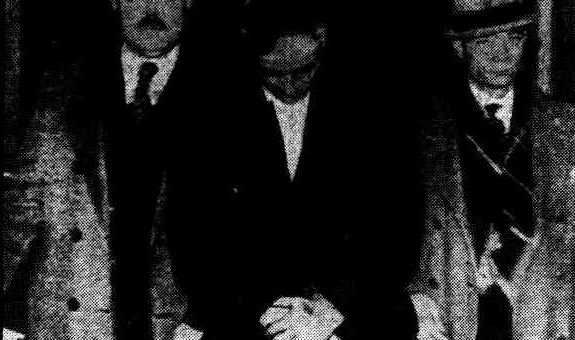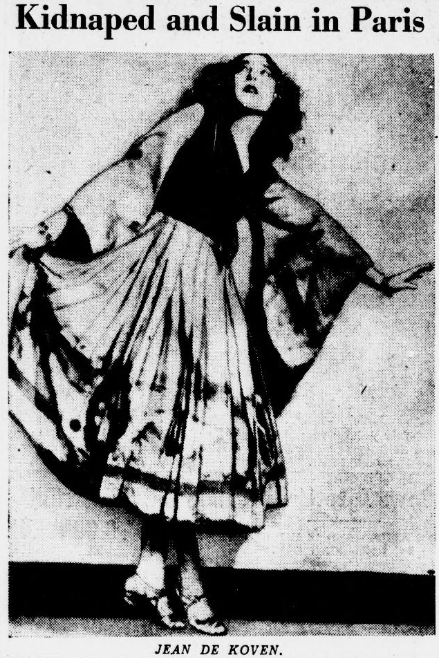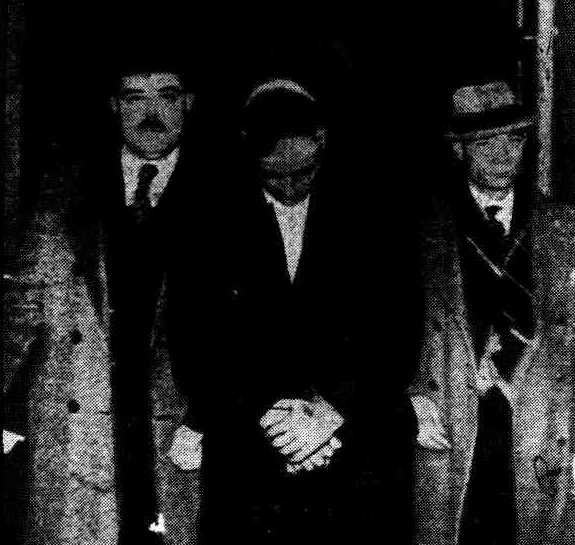
Very little is known about Eugene (Eugen) Weidmann’s childhood. He spent his childhood in Frankfurt, Germany until the start of World War I.
He was then sent to live with his grandparents. While under their care, Weidmann began to pickpocket and steal.
When he was in his twenties, he was arrested and spent five years in jail for robbery.
While in jail, he met up with two or three (the accounts differ) other men who had his same talent. It was decided that he would be the killer in the gang.
Upon their release, they began kidnapping tourists in Paris where the International Exposition was being held.
It was the perfect hunting ground because there were so many rich tourists.
One of the tourists they grabbed in July 1937 was Jean de Koven, a New York City ballet student.
She was traveling with her aunt and when 22-year-old Jean did not return one night, the aunt went to the police to report her as missing.
The police did not take the aunt very seriously and claimed that young Jean was probably off having a bit of a romance.
When the aunt later received a ransom demand of $500 for Jean’s return, the aunt went back to the Paris police. This time, they accused the aunt of pulling a publicity stunt.

It wasn’t until 15 days later when Jean’s traveler’s checks were cashed in and the signatures were found to be forgeries that the police began to look into the matter.
Little did they know at the time that young Jean was already dead.
After taking her belongings, Weidmann strangled her with his bare hands and buried her under the front steps to the house the men rented outside of Paris.
In September that same year, Weidmann hired a chauffeur, and then shot the man in the back of the neck and stole his car.

Again, in October, Weidmann shot a theatrical producer in the back of the neck, stole the man’s wallet, and stripped him of all his clothing. The producer was found naked in the back seat of his car.
Weidmann also murdered three other people: a real estate agent, a private nurse, and a man he had met in jail.
Weidmann and his associates were eventually caught by the police, but only Weidmann was executed for his part in the murders.
He confessed to the six murders, but there were accusations that there may have been more bodies. Inside the rented house was found clothing belonging to several different women, but the discovery was never investigated. There were also reports of other missing people as well as reports of people who managed to escape Weidmann. None of these reports went any further.
During the night before the execution, it was reported that a drunk and rowdy crowd began forming outside the prison walls.
By 4 am., June 17, 1939, the crowds had swelled into the thousands and people were paying immense fees to watch the execution from nearby windows. Photographers came from all over the world and the entire execution was caught on film.
After Weidmann was beheaded, women broke through the police barriers so that they could dip their handkerchiefs in Weidmann’s blood.
The crowd’s behavior was considered to be so appalling that a week later, it was decided that all further executions would be performed in private.

